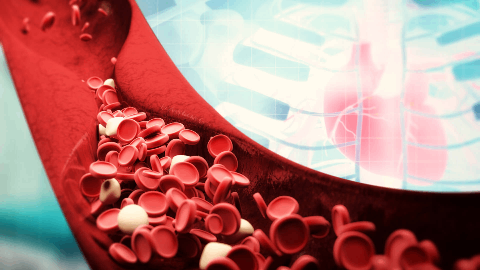预约演示
更新于:2025-07-10
2-Fluorodeschloroketamine
2-氟去氯氯胺酮
更新于:2025-07-10
概要
基本信息
非在研机构- |
权益机构- |
最高研发阶段临床前 |
首次获批日期- |
最高研发阶段(中国)- |
特殊审评- |
结构/序列
分子式C13H16FNO |
InChIKeyPHFAGYYTDLITTB-UHFFFAOYSA-N |
CAS号111982-50-4 |
关联
100 项与 2-氟去氯氯胺酮 相关的临床结果
登录后查看更多信息
100 项与 2-氟去氯氯胺酮 相关的转化医学
登录后查看更多信息
100 项与 2-氟去氯氯胺酮 相关的专利(医药)
登录后查看更多信息
67
项与 2-氟去氯氯胺酮 相关的文献(医药)2025-07-01·JOURNAL OF PHARMACEUTICAL AND BIOMEDICAL ANALYSIS
Potential drug exposure risk assessment of analysts in analytical laboratories through fingernail, hair, and atmospheric environment analyses
Article
作者: Yang, Hongxian ; Zheng, Xiaoyu ; Chen, Jie ; Su, Mengxiang ; Wen, Wu ; Chen, Panpan ; Wu, Jianmei
Analysts in drug testing laboratories are frequently exposed to drugs as part of their daily work activities. Certain drug components can vaporise and adhere to atmospheric particles. Therefore, the presence of drugs in laboratory settings can affect the health and well-being of the laboratory personnel. This study aimed to highlight possible health consequences of 25 expected drug exposure risks by examining fingernail, hair, and atmospheric environment samples. The results showed that etomidate was detected in the hair samples of eight individuals, with the highest level of 19.73 pg/mg, and no components were detected in the fingernail samples. This indicates that etomidate may adhere to hair but does not significantly affect the human body. An atmospheric particulate sampler was used to collect atmospheric particulate matter and gaseous samples from different laboratory rooms. Methamphetamine, ketamine, etomidate, and other drugs were detected in atmospheric particles and gases. Furthermore, the distribution of these chemicals was evaluated by comparing their concentrations in total suspended particulate matter and gas phase. The development and application of these methods coupled with data analysis, aimed at enhancing the self-protection awareness of laboratory scientists and establish a foundation for future assessments of potential hazards.
2025-06-01·Toxicology reports
Zebrafish embryo-larval testing reveals differential toxicity of new psychoactive substances
Article
作者: Peterson, Randall Theodore ; Rodrigues, Leonardo Costalonga ; Costa, Jose Luiz ; Godoi, Alexandre Barcia de ; Maurer-Morelli, Claudia Vianna ; Fais, Viviane Cristina
New psychoactive substances (NPS) have emerged as a significant public health concern, with synthetic cannabinoid receptor agonists (SCRAs) and ketamine derivatives being among the most frequently detected compounds in the forensic context worldwide. The Fish Embryo Acute Toxicity (FET) and Maximum Tolerated Concentration (MTC) tests are used to evaluate the acute toxicity of chemicals. In this study, we used these assays to evaluate the acute toxicity of three NPS in zebrafish embryos and larvae: the SCRA MDMB-4en-PINACA and the ketamine derivatives deschloroketamine (DCK) and 2-fluorodeschloroketamine (2F-DCK). Our findings demonstrated that MDMB-4en-PINACA induced severe developmental abnormalities, including pericardial edema and yolk edema, along with high embryo mortality (10 µM), characterized by endpoints such as coagulation, lack of heartbeat, and lack of somite formation. In contrast, DCK and 2F-DCK exhibited low embryo mortality even at higher concentrations. In larval stages, MDMB-4en-PINACA presented 8 % larvae mortality (10 µM) at eight days post-fertilization (dpf), whereas ketamine derivatives led to 100 % mortality at 2000 µM in the MTC test at eight dpf. The LC50 was calculated for the FET test with MDMB-4en-PINACA, and MTC test for both DCK and 2F-DCK. Additionally, our results support the absence of N-methyl-D-aspartate (NMDA) receptors in the early life stages of zebrafish described in previous studies and highlight the significance of ketamine derivatives intoxications when the NMDA receptor is expressed. Notably, MDMB-4en-PINACA exhibited significantly higher toxicity, with an LC50 of approximately 26 times lower than that of the ketamine derivatives. These results are particularly relevant given the increasing global prevalence of NPS-related intoxications and fatalities. Using zebrafish as an in vivo model for toxicological research provides an efficient approach for screening the acute effects of emerging compounds such as NPS.
2025-03-01·Biomolecules & Therapeutics
Structure-Activity Relationship of NMDA Receptor Ligands and Their Activities on the ERK Activation through Metabotropic Signaling Pathway
Article
作者: Kundu, Dooti ; Wang, Shujie ; Wang, Mengling ; Jang, Choon-Gon ; Paudel, Suresh ; Kim, Kyeong-Man
The N-methyl-D-aspartate receptor (NMDA-R) subunit GluN2B is abundantly expressed in brain regions critical for synaptic plasticity and cognitive processes. This study investigated the structure-activity relationships (SAR) of NMDA-R ligands using GluN2B as a molecular target. Thirty potential NMDA-R antagonists were categorized into two structural classes: 1-(1-phenylcyclohexyl) amines (series A) and α-amino-2-phenylcyclohexanone derivatives (series B). In series A compounds, the phenyl ring and R1 substituents were positioned at the carbon center of the cyclohexyl ring, with R2 substituents at the para- or meta-positions of the phenyl ring. SAR analysis revealed optimal binding affinity when R1 was carbonyl (C=O) and R2 was 4-methoxy (4-OMe). Series B compounds featured a cyclohexanone scaffold with NH-R1 at the α-position and a phenyl ring bearing R2 substituents at ortho-, meta-, or para-positions. Maximum binding affinity was achieved with R1 as hydrogen (H) and R2 as hydroxyl (OH). Compounds were assessed for GluN2B-mediated ERK activation to evaluate potential metabotropic signaling properties. Approximately 50% of the compounds demonstrated ERK activation through a non-ionotropic signaling cascade involving Src, phosphatidylinositol 3-kinase, and protein kinase C. This study elucidated key structural determinants for NMDA-R binding and characterized a novel metabotropic signaling pathway. Notably, our findings suggest that compounds acting as antagonists at the ionotropic site may simultaneously function as agonists through non-ionotropic mechanisms.
5
项与 2-氟去氯氯胺酮 相关的新闻(医药)2023-07-25
药物研发进展
1.康希诺生物重组带状疱疹疫苗CS-2032在加拿大获批临床
7月23日,康希诺生物发布公告称,其与Vaccitech公司合作开发的重组带状疱疹疫苗(腺病毒载体)(CS-2032带状疱疹疫苗)已获得加拿大卫生部的临床试验批准。该疫苗目标人群为50岁以上成年人,适用于预防水痘-带状疱疹病毒引起的皮肤带状疱疹和神经痛。带状疱疹是由潜伏在体内的水痘-带状疱疹病毒(VZV)再激活而引起的一种急性感染性皮肤疾病。儿童时期初次感染VZV引起水痘,感染后病毒进入皮肤的感觉神经末梢,沿着脊髓后根或三叉神经节神经纤维向中心移动,以一种持久潜伏的形式长期存在于脊神经或颅神经感觉神经节中。当人体免疫力低下或受到非特异性刺激后,病毒再次活动,生长繁殖,导致受侵犯的神经节发炎或坏死,产生神经痛。同时,再活动的病毒从一个或数个相邻的神经节沿着相应的感觉神经纤维传播到皮肤,造成单侧分布的红斑基础上的簇集性水泡。在爆发前阶段,患者表现为低热、不适、将发疹部位疼痛、感觉异常;在急性发作期,患者表现为皮疹和疼痛,单侧皮肤表面水疱、红斑、硬结;在慢性期,患者则表现为持续疹后神经痛。根据康希诺生物公告,CS-2032带状疱疹疫苗采用了黑猩猩腺病毒载体技术路线,腺病毒载体疫苗能够同时激发细胞免疫与体液免疫。同时,临床试验产品采用先进的工艺技术及符合国际标准的品质管制和控制体系生产,疫苗全生产过程中不使用任何动物源成分,从而提高了最终产品的安全性。临床前研究数据显示,CS-2032带状疱疹疫苗能够同时激发体液免疫与细胞免疫,体液免疫与葛兰素史克(GSK)的重组带状疱疹疫苗Shingrix没有显著性差异,而系统性细胞免疫水平则显著高于后者,预计CS-2032会具有良好的保护效力。
2.礼来IL-23抑制剂mirikizumab拟纳入突破性治疗品种,治疗克罗恩病
7月24日,中国国家药监局药品审评中心(CDE)官网最新公示,礼来(Eli Lilly and Company)申请的mirikizumab注射液拟纳入突破性治疗品种,拟开发用于治疗中重度活动性克罗恩病(CD)成人患者。公开资料显示,mirikizumab(LY3074828)是一款IL-23抑制剂,目前正在海外开展多项3期临床试验。克罗恩病是一种炎症性肠病(IBD),会导致消化道组织肿胀(发炎),从而引起腹痛、严重腹泻、疲劳、体重减轻和营养不良。在不同人中,克罗恩病导致的炎症会在消化道的不同区域发生,最常见于小肠部位。此外,这种炎症通常会扩散到肠道的深层,严重时可能致命。礼来开发的mirikizumab是一种人源化IgG4单克隆抗体,可与IL-23的p19亚基结合,阻断IL-23介导的炎症反应。作为一种炎性细胞因子,IL-23参与了多个炎症相关的生理过程,被认为与许多免疫介导的慢性疾病有关,也因此成为了许多自身免疫性疾病的治疗靶点。此前,mirikizumab已在治疗中重度克罗恩病的2期临床试验中获得积极结果。这是一项名为SERENITY的随机、双盲、含安慰剂对照试验,主要终点是12周之后内镜缓解率,定义为克罗恩病简化内镜评分(SES-CD)与基线相比降低50%。次要终点包括患者报告结局(PRO)检测的临床缓解,以及安全性。试验达到了主要终点和关键次要终点,与安慰剂相比,mirikizumab在治疗12周后显著降低临床和内镜检测到的疾病活动。在内镜缓解率方面,接受200mg、600mg和1000mg剂量mirikizumab的患者组,缓解率分别为25.8%、37.5%和43.8%,安慰剂组这一数值为10.9%。在PRO临床缓解率方面,接受200mg、600mg和1000mg剂量mirikizumab的患者组,缓解率分别为12.9%、28.1%和21.9%,安慰剂组这一数值为6.3%。
3.正大天晴超5000万美元引进,口服PPAR激动剂拟纳入突破性治疗品种
7月24日,中国国家药监局药品审评中心(CDE)官网最新公示,正大天晴申请的1类新药lanifibranor片拟纳入突破性治疗品种,拟开发用于治疗伴有肝纤维化的非肝硬化非酒精性脂肪性肝炎(NASH)的成人患者。公开资料显示,lanifibranor(拉尼兰诺)是一种口服PPAR激动剂,正大天晴通过一项超5000万美元的合作,获得了该药在大中华区的开发、生产和商业化权利。NASH是非酒精性脂肪性肝病(NAFLD)的更晚期形式,也是导致肝脏相关死亡的主要原因。此外,NASH患者,特别是那些具有更多代谢风险因素的患者,心血管不良事件的风险增加,发病率和死亡率也相应提高。一旦NASH发展为显著的肝纤维化,患者产生不良肝损伤结果的风险急剧上升。Lanifibranor是一种口服过氧化物酶体增殖物激活受体(PPAR)激动剂,可同时激活PPARα、PPARδ和PPARγ,这些受体在调控脂质代谢、炎症反应和纤维化过程中发挥重要作用。该药物通过作用于这三种PPAR亚型来调节脂肪代谢,减轻肝脏炎症和纤维化。此前,美国FDA已授予lanifibranor用于治疗NASH的突破性疗法认定和快速通道资格。在针对NASH的2b期NATIVE试验中,lanifibranor已显示出良好的安全性和耐受性。Lanifibranor 1200mg/天、持续24周的治疗,显著降低了肥胖且经活检证实为NASH患者的SAF-A(脂肪变性、活动性、纤维化的活动度)评分。此外,研究也达到了多个次要终点,包括NASH缓解且纤维化不进展,纤维化分期改善至少1期且NASH无恶化,以及NASH缓解且纤维化分期至少改善1期。此外,lanifibranor治疗还显著改善了血清转氨酶水平,肝损伤、炎症和纤维化的生物标志物,糖化血红蛋白(HbA1c)、脂质水平和胰岛素水平。
4.倍特得诺药业申报肌肉松弛药巴氯芬口服溶液拟纳入优先审评
7月24日,中国国家药监局药品审评中心(CDE)官网公示,倍特得诺药业申报的巴氯芬口服溶液拟纳入优先审评,公开资料显示,巴氯芬是一种中枢肌肉松弛药,它通过作用于脊髓和脑部的GABA受体,降低神经元的兴奋性,减轻肌痉挛和僵硬,并且该药的药效持续时间较长,可以达到12小时。GABA(γ-氨基丁酸)是人脑中的一种主要的抑制性神经递质,能降低中枢神经系统的兴奋性。巴氯芬通过增加GABA的合成和释放,增强其在神经元上的抑制作用,从而降低肌肉张力,达到缓解随意肌痉挛的目的。该产品用于缓解由以下疾病引起的随意肌痉挛:多发性硬化、其他脊髓损伤,例如脊髓肿瘤、脊髓空洞症、运动神经元疾病、横贯性脊髓炎、脊髓创伤性部分切除;也适用于成人和儿童,用于缓解因脑血管意外、脑瘫、脑膜炎、颅脑外伤引起的随意肌痉挛。根据CDE公示信息,该产品为儿童用药新剂型,按“符合儿童生理特征的儿童用药品新品种、剂型和规格”纳入优先审评审批程序。巴氯芬由诺华研发和生产,最早于1973年在意大利上市,是第一个应用于临床的选择性GABAβ受体激动剂。1977年,巴氯芬获FDA批准在美国上市。1980年经PMDA批准在日本上市;1998年经NMPA批准进入中国市场;2005年在欧洲上市。巴氯芬临床选择的剂型有普通片剂、口服混悬剂、注射剂、颗粒剂。
5.Bavarian Nordic RSV疫苗产品III期VANIR研究未达终点,终止产品开发
7月22日,Bavarian Nordic宣布其呼吸道合胞病毒(RSV)疫苗产品MVA-BN RSV在III期VANIR研究中未能显著降低下呼吸道疾病(LRTD)的发生率,因此决定终止该产品的开发计划,并结束与优锐医药的合作关系。MVA-BN RSV是一款以MVA-BN为载体的RSV疫苗,同时编码RSV表面蛋白G蛋白及F蛋白和内部蛋白N蛋白及M2蛋白,旨在刺激广泛的免疫应答。2022年3月,优锐医药以2.25亿美元的总交易额获得该疫苗的中国、韩国、东南亚国家权益。VANIR研究是一项全球性、随机、双盲、安慰剂对照的III期临床试验,共纳入超过20000例60岁及以上的受试者。最终研究结果显示,MVA-BN RSV预防至少2种LRTD症状发生的效力为59%,显著优于安慰剂组。然而,该疫苗预防至少2种LRTD症状发生的效力仅有42.9%,与安慰剂组的数据无显著性差异。Bavarian Nordic总裁兼首席执行官Paul Chaplin说:“MVA-BN RSV在这项关键试验中没有成功达到终点,我们对此感到失望。虽然这一结果出乎意料,并将影响我们的短期增长预期,但我们的商业业务仍然是独特的,因为最近几款产品的销售额强劲增长,这为公司未来几年的盈利增长奠定了坚实的基础。”今年3月,强生的病毒载体RSV疫苗JNJ-64400141亦被终止开发。强生给出的解释是“对投资组合进行审查以确定产品开发优先级以及对RSV疫苗的前景评估后,决定终止RSV成人疫苗项目”,不过,也有外界推测其终止决定可能跟疫苗的预防效果或安全性相关。
6.吉利德终止CD47单抗magrolimab III期研究
7月21日,吉利德宣布,CD47单抗magrolimab联合阿扎胞苷治疗高风险骨髓增生异常综合征(MDS)的III期ENHANCE研究因计划分析结果无效而终止。该研究中的安全性数据与已知的magrolimab概况以及该患者群体中典型的不良事件相符。吉利德建议MDS患者停止使用magrolimab治疗。Magrolimab是一种潜在的first-in-class抗CD47免疫疗法,由吉利德49亿美元收购Forty Seven公司获得,主要作用机制是阻断CD47-信号调节蛋白(SIRPα)之间的抑制性相互作用,增强巨噬细胞和其他吞噬细胞识别和消灭外来细胞和恶性细胞的能力,从而达到阻断癌细胞发出的“别吃我”信号的目的。Magrolimab的临床开发计划涵盖10种潜在适应症,包括正在进行的两项关键试验:ENHANCE-2研究针对TP53突变的急性髓系白血病(AML),ENHANCE-3研究一线治疗不适合接受强化化疗的AML。吉利德开发magrolimab之路并不平坦。2022年1月,由于研究人员报告的可疑意外严重不良反应(SUSARs)在各研究组间存在明显的不平衡,FDA部分暂停了吉利德magrolimab+阿扎胞苷的联合研究。同年4月,吉利德迎来FDA解封。FDA在回顾了每个试验的综合安全性数据后,解除了magrolimab+阿扎胞苷的联合研究的部分临床暂停。“患者的健康和福祉是我们的首要任务,虽然这是一个令人失望的消息,但它证实了治疗HR-MDS所面临的挑战,近20年来,HR-MDS一直没有新的治疗方法获得批准。”吉利德科学首席医学官、医学博士Merdad Parsey表示:“吉利德对为这项研究做出贡献的患者、家属、研究人员和权益团体深表感谢,我们将进一步了解magrolimab并探索其治疗其他癌症的潜力。”
7.HER3 ADC 联用 PD-L1!恒瑞医药联合治疗新方案获批临床
7 月 24 日,恒瑞医药宣布,NMPA 已核准签发 PD-L1 单抗阿得贝利单抗、HER3 ADC 注射用 SHR-A2009 的《药物临床试验批准通知书》,恒瑞将于近期开展临床试验。具体为:阿得贝利单抗联合阿美替尼或 SHR-A2009 加或不加化疗用于晚期实体瘤患者。HER3 ADC 由于 Patritumab deruxtecan(U3-1402,来自第一三共)在 EGFR 突变 NSCLC 适应症上的惊艳表现而受到看好,当前全球仅 17 款 HER3 ADC,进入临床的仅仅 6 款。国内参与者以恒瑞医药(SHR-A2009)、百利天恒(BL-B01D1,EGFR/HER3 双靶点)、映恩生物(DB-1310)和宜联生物(YL202)为代表。SHR-A2009 于 2021 年 8 月首次申请临床,同年10 月公示启动临床,目前有 2 项临床试验登记,恒瑞公告显示,截至目前,相关项目累计已投入研发费用约 4685 万元。从阿得贝利单抗研发思路上看,选择IgG4抗体并进行Fc段改造,可以更加专注作用于靶细胞,避免对免疫细胞的伤害,最终追求疗效和安全性双赢的目标。通过抗体改造,丢弃了抗体上的这些“瑕疵与糟粕”(ADCC和ADCP效应),让阿得贝利单抗更加安全,可谓是“君子弃瑕”,而CAPSTONE-1研究中良好的安全性数据也印证了抗体改造的成功。阿得贝利单抗的注册临床研究CAPSTONE-1结果显示,相较于对照组,阿得贝利单抗联合化疗显著改善患者的总生存期(mOS: 15.3个月vs 12.8个月),降低死亡风险达28%,2年生存率达31.3%(vs 化疗17.2%),且具有良好的安全性,≥3级的免疫相关不良事件(irAE)发生率均不超过1.8%。Patritumab Deruxtecan 也有一项联合疗法临床试验在进行,不过联用的是阿斯利康的三代 EGFR 抑制剂奥希替尼,与恒瑞本次获批临床的 SHR-A2009 联用翰森制药三代 EGFR 抑制剂阿美替尼相似;不过,目前第一三共尚未启动联用 PD-(L)1 的HER3 ADC 临床试验。
行业资讯
超30亿美元!罗氏引进Alnylam的高血压RNAi疗法
7月24日,Alnylam宣布已与罗氏达成战略协议,开发和商业化Alnylam用于治疗高血压的RNAi治疗药物zilebesiran。该合作伙伴关系将促成一个大胆的发展计划,有望打破全球高血压治疗模式,同时推进Alnylam的P5x25战略。根据协议条款,Alnylam将获得3.1亿美元的预付款,并有资格获得额外的付款,包括未来几年的开发里程碑付款,以及监管和销售里程碑付款,潜在交易价值高达28亿美元。Alnylam和罗氏将在美国共同商业化zilebesiran,并平分利润。罗氏获得了zilebesiran在美国以外地区的独家商业化权益,Alnylam以换取zilebesiran在美国以外地区净销售额的低两位数版税。此外,Alnylam将领导首个适应症的联合临床开发计划,罗氏有权参与其中,包括在zilebesiran提交监管机构批准之前的心血管结果试验,所有开发成本由Alnylam(40%)和罗氏(60%)共同分担。罗氏可能在未来领导其他适应症的开发。Zilebesiran是一款靶向肝脏表达血管紧张素原(angiotensinogen,AGT)的RNAi药物,目前处于II期开发阶段。7月19日,Zilebesiran治疗高血压的I期研究结果在NEJM杂志上正式发表。该论文报告的关键数据显示,在I期研究中,与安慰剂相比,zilebesiran与血清AGT的剂量依赖性降低相关,在单剂≥200mg zilebesiran给药后,实现了24小时周期内持续持久的血压降低,且效果持续长达6个月。Alnylam目前正在KARDIA II期临床项目中评估zilebesiran的安全性和有效性,包括作为单药治疗(KARDIA-1),以及与标准治疗降压药物联合用药(KARDIA-2),公司预期在2023年中期和年底报告这些试验的结果。

引进/卖出优先审批突破性疗法疫苗
2023-07-25
·生物谷
2023年7月24日,Alnylam宣布与罗氏公司达成战略协议,共同开发和商业化Alnylam用于治疗高血压的在研RNAi疗法zilebesiran,该疗法目前正处于第二阶段开发阶段。双方的合作有助于制定大胆的开发计划,目标是在全球范围内颠覆高血压治疗模式,同时推进Alnylam的P5x25 战略。
根据协议条款,Alnylam将获得3.1亿美元的预付款,并有资格获得额外的付款,包括未来几年的开发里程碑付款,以及监管和销售里程碑付款,潜在交易价值高达28亿美元。
Alnylam和罗氏将在美国共同商业化zilebesiran,并平分利润。罗氏获得了zilebesiran在美国以外地区的独家商业化权益,Alnylam以换取zilebesiran在美国以外地区净销售额的低两位数版税。
此外,Alnylam将领导首个适应症的联合临床开发计划,罗氏有权参与其中,包括在zilebesiran提交监管机构批准之前的心血管结果试验,所有开发成本由Alnylam(40%)和罗氏(60%)共同分担。罗氏可能在未来领导其他适应症的开发。
Zilebesiran是一款靶向肝脏表达血管紧张素原(angiotensinogen,AGT)的RNAi药物,目前处于II期开发阶段。2023年7月19日,Zilebesiran治疗高血压的I期研究结果在NEJM杂志上正式发表。
在一项 1 期研究中,与安慰剂相比,Zilebesiran能剂量依赖性地降低血清血管紧张素原(AGT),实现强直性血压控制,24 小时内血压持续降低,单次剂量≥200 毫克后血压降低可持续 6 个月。Zilebesiran还表现出可接受的安全性,支持继续进行临床开发。Alnylam 公司的 KARDIA 2 期临床项目正在研究齐来比西兰的安全性和有效性,该药既可作为单一疗法(KARDIA-1),也可与三种标准抗高血压药物之一联用(KARDIA-2)。根据积极的 1 期数据,Zilebesiran 有可能成为一种最佳的疾病治疗方法,特别是为心血管风险较高的高血压患者带来变革性的益处。Zilebesiran可能采用一年两次的皮下给药方案,因此也有可能提高治疗的依从性。此外,Zilebesiran 还可能对其他潜在的心血管适应症有效,这些适应症的需求尚未得到满足。
关于 Zilebesiran
Zilebesiran是一种针对血管紧张素原(AGT)的皮下注射RNAi疗法,目前处于2期临床开发阶段,用于治疗高血压,适用于高需求人群。AGT是肾素-血管紧张素-醛固酮系统(RAAS)的最上游前体,该级联在血压(BP)调节中的作用已得到证实,抑制AGT具有公认的抗高血压效果。Zilebesiran 可抑制 AGT 在肝脏中的合成,从而可能导致 AGT 蛋白的持久减少,最终导致血管收缩素 (Ang) II 的减少。Zilebesiran采用了Alnylam公司的增强稳定化学强化(ESC+)GalNAc-共轭物技术,可以皮下注射,具有更高的选择性和更广的治疗指数。Zilebesiran的安全性和有效性尚未得到FDA、EMA或任何其他卫生机构的确认或评估。
关于高血压
高血压是一种复杂的多因素疾病,大多数主要指南将其临床定义为收缩压 (SBP) 超过 140 mm Hg 和/或舒张压 (DBP) 超过 90 mm Hg,但 AHA/ACC 指南将 SBP 超过 130 mm Hg 和/或 DBP 超过 80 mm Hg 定义为较低的阈值。全球有超过 10 亿人患有高血压。1 仅在美国,就有约 47% 的成年人患有高血压,其中一半以上的患者在接受药物治疗后血压仍高于目标值。尽管抗高血压药物已经上市,但仍有大量医疗需求未得到满足,特别是考虑到
关于 RNAi
RNAi(RNA 干扰)是一种基因沉默的自然细胞过程,是当今生物学和药物开发领域最有前途、发展最快的前沿领域之一。它的发现被誉为 "每十年左右发生一次的重大科学突破",并获得了 2006 年诺贝尔生理学或医学奖。通过利用细胞中发生的天然 RNAi 生物过程,一类被称为 RNAi 疗法的新药现已成为现实。小干扰 RNA(siRNA)是介导 RNAi 的分子,构成了 Alnylam 公司的 RNAi 治疗平台,它通过有效抑制编码致病蛋白或疾病途径蛋白的基因前体信使 RNA(mRNA),从而阻止它们的产生,从而在当今药物的上游发挥作用。这是一种革命性的方法,有可能改变对遗传病和其他疾病患者的治疗。
关于 Alnylam Pharmaceuticals
Alnylam Pharmaceuticals 公司(纳斯达克股票代码:ALNY)率先将 RNA 干扰(RNAi)技术转化为一类全新的创新药物,有望改变那些饱受罕见病和流行病折磨、需求尚未得到满足的人们的生活。RNAi 疗法以诺贝尔奖获奖科学为基础,是一种强大的、经过临床验证的方法,可产生变革性药物。自 2002 年成立以来,Alnylam 一直引领着 RNAi 革命,并将继续实现将科学可能性转化为现实的大胆愿景。Alnylam 的商业 RNAi 治疗产品包括 ONPATTRO(patisiran)、AMVUTTRA(vutrisiran)、GIVLAARI(givosiran)、OXLUMO(lumasiran)和 Leqvio(inclisiran)。
内容来源于网络,如有侵权,请联系删除。

临床2期引进/卖出临床结果
2023-06-29
·药明康德
辉瑞(Pfizer)公司宣布,美国FDA已受理其基因疗法fidanacogene elaparvovec用以治疗成人血友病B的生物制品许可申请(BLA),并将PDUFA日期设置为2024年第二季度。同时,fidanacogene elaparvovec的欧洲上市许可申请(MAA)也已获受理,正在接受欧洲药品管理局(EMA)的审评。
血友病B是一种危及生命的退行性疾病,患者由于基因出现突变,导致缺乏凝血因子Ⅸ(FIX)。患有该疾病的患者容易发生关节、肌肉和内脏器官出血,出现疼痛、肿胀和关节损伤。目前的治疗包括终生预防性输注凝血因子IX,以暂时替代或补充低水平的凝血因子。
Fidanacogene elaparvovec是一种新型的在研基因疗法,含有生物工程化的腺相关病毒(AAV)衣壳(蛋白外壳)和FIX基因的高活性变体。对于血友病B患者来说,这种基因治疗的目标是使他们能通过一次性治疗产生自体的FIX蛋白,而非像目前的标准治疗那样需要定期静脉输注FIX。
此次上市申请的递交是基于3期BENEGENE-2试验的疗效和安全性数据,此试验共有45名患者入组。分析显示,BENEGENE-2试验达到其主要终点,即与FIX预防性治疗方案相较,患者在经过fidanacogene elaparvovec输注后,其总出血事件的年化出血率(ABR)达到非劣效性与优效性。
安全性方面,该疗法的耐受性良好,安全性特征与之前1/2期试验结果一致。
参考资料:[1] FDA Accepts Pfizer’s Application for Hemophilia B Gene Therapy Fidanacogene Elaparvovec. Retrieved June 27, 2023 from https://www.pfizer.com/news/press-release/press-release-detail/fda-accepts-pfizers-application-hemophilia-b-gene-therapy
内容来源于网络,如有侵权,请联系删除。

基因疗法临床结果临床3期
100 项与 2-氟去氯氯胺酮 相关的药物交易
登录后查看更多信息
研发状态
10 条进展最快的记录, 后查看更多信息
登录
| 适应症 | 最高研发状态 | 国家/地区 | 公司 | 日期 |
|---|---|---|---|---|
| 重度抑郁症 | 临床前 | 以色列 | 2023-01-31 |
登录后查看更多信息
临床结果
临床结果
适应症
分期
评价
查看全部结果
| 研究 | 分期 | 人群特征 | 评价人数 | 分组 | 结果 | 评价 | 发布日期 |
|---|
No Data | |||||||
登录后查看更多信息
转化医学
使用我们的转化医学数据加速您的研究。
登录
或

药物交易
使用我们的药物交易数据加速您的研究。
登录
或

核心专利
使用我们的核心专利数据促进您的研究。
登录
或

临床分析
紧跟全球注册中心的最新临床试验。
登录
或

批准
利用最新的监管批准信息加速您的研究。
登录
或

特殊审评
只需点击几下即可了解关键药物信息。
登录
或

生物医药百科问答
全新生物医药AI Agent 覆盖科研全链路,让突破性发现快人一步
立即开始免费试用!
智慧芽新药情报库是智慧芽专为生命科学人士构建的基于AI的创新药情报平台,助您全方位提升您的研发与决策效率。
立即开始数据试用!
智慧芽新药库数据也通过智慧芽数据服务平台,以API或者数据包形式对外开放,助您更加充分利用智慧芽新药情报信息。
生物序列数据库
生物药研发创新
免费使用
化学结构数据库
小分子化药研发创新
免费使用
